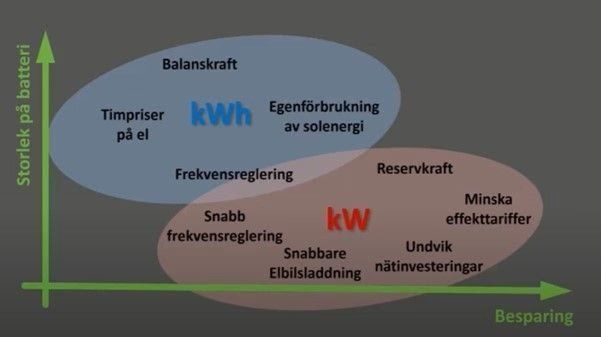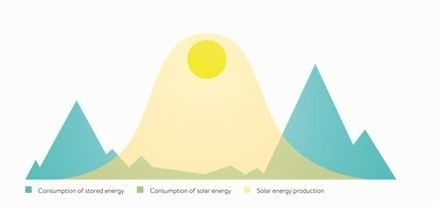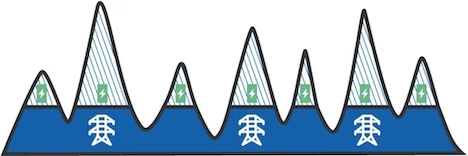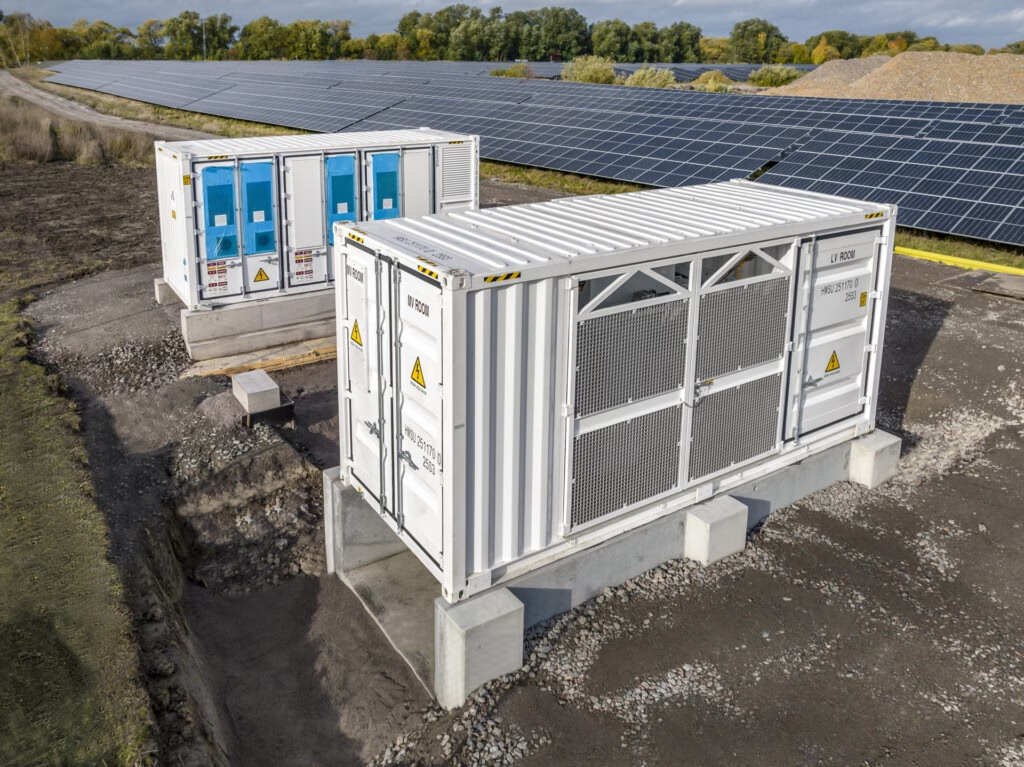In this blog post, we dive deeper into how batteries can be used. There are many different application areas and uses for batteries. In future posts, we will explore various battery chemistries and how to select the right type for specific applications. By the end of this post, you will have a better understanding of the many ways batteries can be utilized, likely more than you might have expected.
How Can Batteries Be Used?
The intended application of a battery system determines which type of battery and control setup is most suitable. Some batteries can charge and discharge quickly, while others have higher capacities or special cycling properties. Battery applications can generally be evaluated based on their power and energy requirements. Some scenarios require high power with low energy capacity, while others need large amounts of both. The right system is designed to meet the demands of each specific use case.

Time shifting
One of the most common applications of a battery is to store excess solar energy generated at midday and use it in the evening when energy demand is higher. This application typically doesn’t require high performance from the battery system, as it operates at around 0.3 to 0.5 C (relatively slow charging and discharging). Since the Arctic Series has a C-rate of 1, it can easily handle this type of application.
To fully utilize solar energy generated on a property in northern regions, a large battery capacity is needed. This is due to both the large size of many solar installations and the fact that energy consumption patterns vary throughout the day and across seasons. The qapasity Arctic Series is designed to meet these needs with its modular system, offering scalable capacity from 10.84 kWh to 37.94 kWh, 2 to 7 modules.

Peak Load Shaving
Batteries can be used to limit the peak power drawn from the grid. In this application, the battery remains in standby mode until a preset threshold is reached. Once that threshold is exceeded, the battery supplies the additional power needed beyond what the grid can provide. This helps reduce both the size of the main fuse and grid connection fees for customers with power-based tariffs.
This application requires faster charging and discharging, as well as quick response times from the battery system to prevent the main fuse from tripping. A helpful analogy is driving a car while wearing VR glasses that show a delayed view of the road. If there is too much delay, you won’t be able to react in time to sharp turns and could crash. Similarly, a battery that responds too slowly won’t provide the needed power fast enough, leading to excessive current from the grid and a blown fuse.
The qapasity Arctic Series, paired with an Energy Management System (EMS), can handle this application without issues, helping you avoid costs related to peak power demand. More details on EMS can be found in a separate blog post.

Avoiding Grid Upgrades
In Sweden, grid operators are currently not allowed to install their own batteries, as these are classified as production assets. However, batteries can be used to delay or even avoid grid infrastructure upgrades.
Instead of reinforcing an overloaded grid by laying new cables, a battery system can provide the extra power required during peak demand periods. This could save millions, in cable and infrastructure costs. Batteries can address capacity shortages faster and more cost-effectively, especially in cases where land preparation and construction are expensive.

Backup Power
For decades, one of the most common uses of batteries has been in emergency or backup power systems. If the grid goes down, a battery system can maintain power to critical loads. In some cases, backup power is essential, for example, at hospitals or for mobile network infrastructure. It can also be critical in other scenarios, such as grocery stores, where a power outage lasting more than 2-3 hours could result in spoiled goods and significant financial losses. Similarly, factories may face not only lost productivity but also high costs from production downtime.
For private homeowners, a smaller hybrid system can ensure that essential comforts continue functioning even during severe storms and extended blackouts.

Grid Support & ancillary services
Around the world, large battery installations are being built to help stabilize the electrical grid. These systems can function as stand-alone facilities or be installed near solar and wind farms. In addition to storing and discharging energy as needed, battery systems provide key grid services, such as voltage regulation and frequency control.

These large battery parks act as shock absorbers for the grid, balancing supply and demand on the electricity market. Although large battery systems have not yet become common in Sweden due to the high share of hydropower in the Nordic grid, similar systems have become widespread abroad. In many countries, solar and wind farms with integrated battery storage have outcompeted fossil fuel power plants, such as coal and oil facilities.

Figure 1. Illustration of Supply and Demand
Image source: ÖBO.



